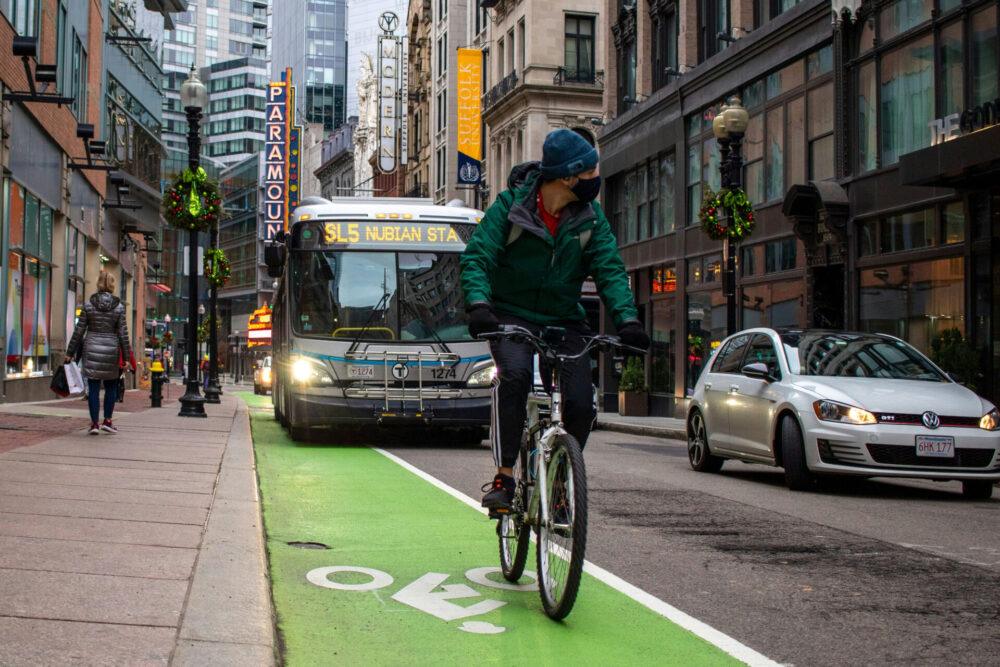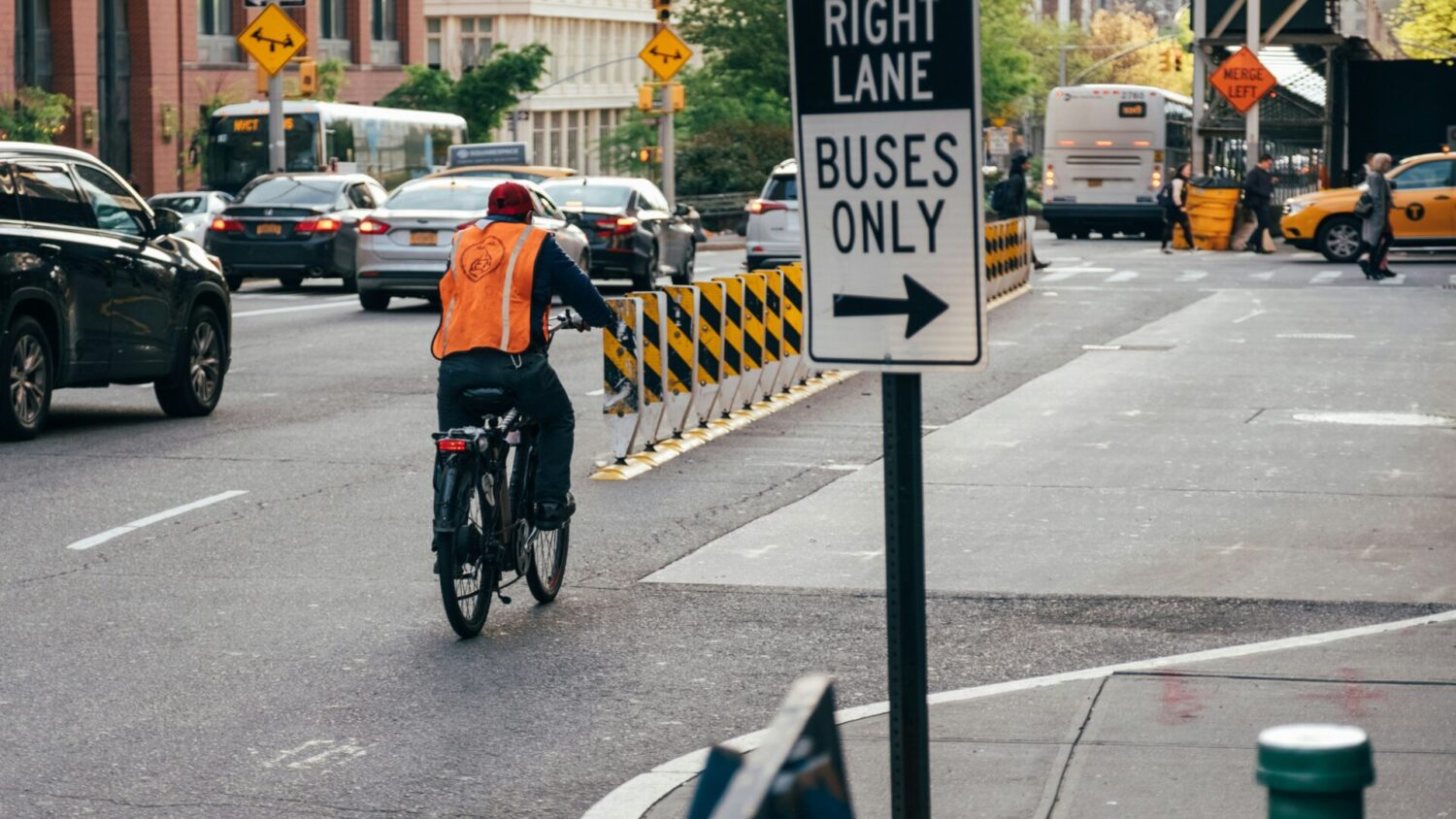Discover how US cities gain from enhanced cycling infrastructure: leading to sustainable, vibrant communities and a reduction in congestion.
Cycling infrastructure in the United States has come a long way, but there is still much room for improvement. Enhancing cycling infrastructure offers numerous benefits, including increased safety, better public health and environmental sustainability. This blog explores the current state of cycling infrastructure in US cities and the advantages of investing in and improving this infrastructure.
Cycling Infrastructure in U.S. Cities
The current state of cycling infrastructure in the U.S. varies significantly from city to city. While cities like Portland, Minneapolis, and Boulder are celebrated for their extensive and well-maintained bike lanes, many other cities lag. For instance, cities with robust cycling networks have seen a surge in the number of cyclists and a corresponding drop in traffic congestion and pollution. According to the study 50 Best Cities for Biking in the US – Explore (exploreworldwide.com) , these cities serve as exemplary models for what is possible with the right investment and planning.
The Importance of Protected Bike Lanes
Protected bike lanes are essential for ensuring the safety of cyclists and encouraging more people to ride. These lanes physically separate cyclists from motor vehicle traffic, reducing the risk of accidents and enhancing urban mobility. Statistics from One-Way Protected Cycle Tracks | National Association of City Transportation Officials (nacto.org) (NACTO) reveal that cities with protected bike lanes experience significantly fewer cyclist injuries and fatalities compared to those with traditional bike lanes.
What Makes Protected Bike Lanes Safer Than Traditional Bike Lanes?
Protected bike lanes offer physical barriers that separate cyclists from motor vehicles, significantly reducing the risk of collisions and creating a safer, more inviting environment for cycling.
The Benefits of Investing in Cycling Infrastructure
Investing in cycling infrastructure yields a multitude of benefits across various domains:
- Economic Benefits: Improved cycling infrastructure can boost local economies by increasing property values, reducing healthcare costs, and attracting tourism. Businesses in bike-friendly areas often see increased foot traffic and sales, as cyclists are more likely to stop and shop locally.
- Health Benefits: Cycling promotes physical activity, which is crucial for maintaining overall health. Regular cycling can reduce the risk of chronic diseases, improve mental health, and lower healthcare costs. Cities that invest in cycling infrastructure often report higher levels of physical activity among residents.
- Environmental Advantages: Cycling is a zero-emission mode of transport, making it an excellent choice for reducing urban pollution and greenhouse gas emissions. By encouraging more people to cycle, cities can improve air quality and contribute to global sustainability goals.
How to Improve Cycling Infrastructure
Cities can enhance their cycling infrastructure through several practical steps:
- Building more protected bike lanes
- Implementing bike-sharing programs
- Ensuring safe and secure bike parking
- Creating connected networks of bike paths that integrate with public transportation
Community involvement and public support are crucial for developing bike-friendly cities. Engaging with local residents and stakeholders can help ensure that cycling infrastructure meets the needs of the community and gains widespread acceptance.
Cycling Infrastructure Policy and Grants
Current cycling infrastructure policies in the U.S. vary, but there is a growing recognition of the need for more comprehensive and supportive policies. Federal, state, and local governments are increasingly providing grants and funding opportunities to support cycling infrastructure projects.

How Can Cities Fund Improvements in Cycling Infrastructure?
Cities can fund cycling infrastructure improvements through a combination of federal and state grants, local funding, and public-private partnerships. For example, programs like the Transportation Alternatives Program (TAP) provide federal funding for bike lanes and pedestrian pathways. Additionally, many states offer specific grants aimed at promoting sustainable transportation.
Grants and Funding Opportunities
- Transportation Alternatives Program (TAP) is a federal program that provides funding for a variety of transportation alternatives, including biking and walking infrastructure.
- Transportation Alternatives – FAST Act Fact Sheets – FHWA | Federal Highway Administration (dot.gov)
- PeopleForBikes Community Grants offers grants to support bicycle infrastructure projects and programs that make bicycling safer and more accessible.
- Grants | PeopleForBikes
- Safe Routes to School (SRTS) provides funding for projects that improve safety and encourage children to walk and bike to school.
- Safe Routes to School Programs | US Department of Transportation
Cyclehoop offers a range of products and services to support cities, local governments, and authorities in improving cycling infrastructure. Our innovative parking and storage solutions, along with our design and consultancy services, help create bike-friendly environments that encourage more people to cycle. By partnering with Cyclehoop, cities can ensure they have the best infrastructure in place to support and promote cycling.
Investing in cycling infrastructure is a wise decision for U.S. cities. It enhances safety, promotes health, and supports environmental sustainability. By prioritizing cycling infrastructure, cities can create vibrant, resilient communities. For more information on how Cyclehoop can help improve your city’s cycling infrastructure, contact us today.
Discover More:
- The Benefits Of Improving Bicycle Infrastructure In The U.S. (torhoermanlaw.com)
- 7 Reasons to Fund Bicycle Infrastructure | Smart Cities Dive
- One-Way Protected Cycle Tracks | National Association of City Transportation Officials (nacto.org)
- Separate Bicyclists When Speed & Volume are High | National Association of City Transportation Officials (nacto.org)
- 50 Best Cities for Biking in the US – Explore (exploreworldwide.com)
- Transportation Alternatives – FAST Act Fact Sheets – FHWA | Federal Highway Administration (dot.gov)
- Grants | PeopleForBikes
- Safe Routes to School Programs | US Department of Transportation

